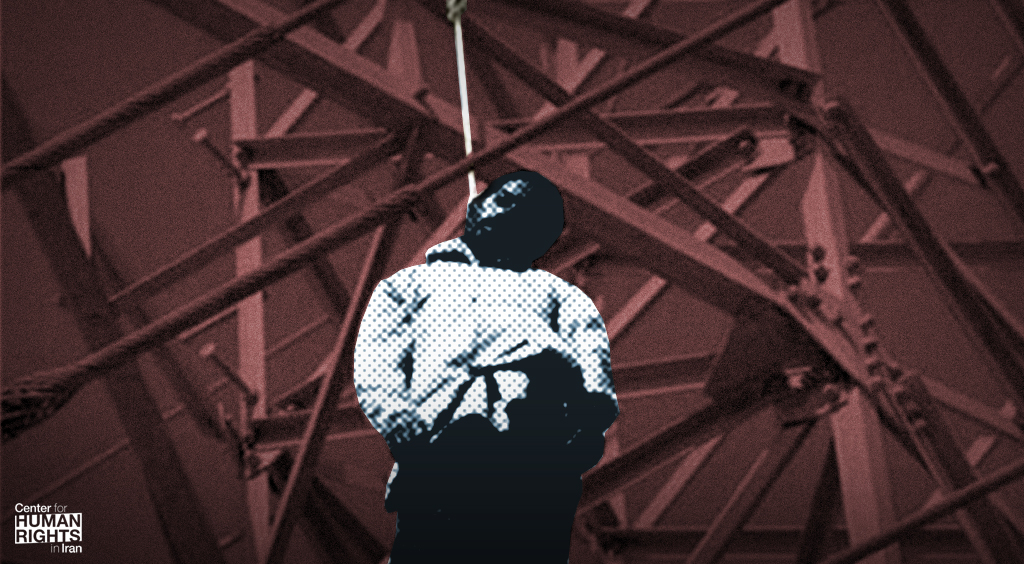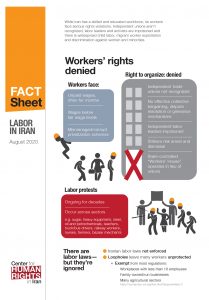Dying of Hopelessness: Suicides on the Rise in Iran
 Suicides increased in Iran in 2020, according to state medical data.
Suicides increased in Iran in 2020, according to state medical data.
Blue-collar workers as well as students who’ve been disproportionately impacted by the country’s struggling economy dominated media reports of people taking their own lives.
The victims include an 11-year-old boy in Bushehr, located on the Persian Gulf coast, whose family could not afford to buy him a digital device to access online schooling, as well as a poor municipality driver who took his life in his office in the city of Marvdasht, central Iran.
On January 20, 2021, the Etemad newspaper quoted a National Medical Examiners Organization’s report stating that in the eight months since the beginning of the Iranian year of March 21, 2020, there were 3,589 deaths by suicide throughout the country, a 4.2 percent increase compared to the same period last year.
“Many workers have lost their jobs in recent years,” a former steelworker in Ahvaz, southwest Iran, told the Center for Human Rights in Iran (CHRI). “In today’s economic conditions, when a worker loses his job, he might not be able to survive a week. Workers have no savings or benefits that would keep them afloat for a month or two until they find another job.”
“For many workers, delays in salary payments are backbreaking, so much so that it’s not much different than being unemployed,” he added. “They just have to keep working, fearing their job might also be taken away.”
The steelworker, who asked not to be identified for fear of retribution from his employer for speaking publicly, added, “When workers can’t make their children’s smallest wish come true, when they have no hope for the future, there’s no other choice but to kill yourself.”
Victims: Impoverished Laborers
On January 12, 2021, news outlets in Iran reported that Bahram Ebrahimi-Mehr, a 31-year-old married father of three, hung himself in front of security cameras in his office. He had been a driver for municipality officials in the city of Marvdasht, Fars Province, for the past 11 years.
In a note addressing his co-workers, Ebrahimi-Mehr said his superior had threatened to fire him numerous times for protesting his unpaid wages–paychecks that wouldn’t have helped him make ends meet even if they had been paid.
“We get 2.8 million tomans (approximately $664) a month, the same salary we were getting seven years ago, or even less than that,” Ebrahimi-Mehr wrote. “How can I cover my home expenses and pay overdue installments and other debts with this salary?”
On December 30, 2020, the news bulletin of the Haft Tappeh sugar mill workers, who’ve been striking for years to demand back wages and benefits, reported that an expelled co-worker, Reza Alekasir, died after hanging himself in his home. His co-workers said Alekasir was struggling to cope with his inability to financially support his family.
“Alekasir had often said he’s the breadwinner of his family, including brothers and sisters with disabilities,” a co-worker said. “He was suddenly fired by the company and replaced by someone else. He tried many times to get his job back but didn’t get anywhere.”
On June 11, 2020, several state news outlets reported the death of Omran Hashemi Moghaddam, a young oil drilling worker in the city of Hoveizeh, Khuzestan Province, who hung himself at his workplace because of financial difficulties caused by unpaid wages.
Then on November 17, 2020, a municipality worker in Kermanshah, western Iran, committed self-immolation in front of the Workers Insurance Guild and died in the hospital the next day. The worker, whose name was kept private, had been protesting his company’s refusal to provide him and his family health insurance.
“This was the fate of a worker in a country that claims to be the fifth richest in the world; a country where the rights of workers are trampled by agencies responsible for their welfare,” wrote Iran Kargar (“Iran Worker”), an independent labor-focused Persian-language newsletter, in a commentary discussing the man’s suicide.
“This happened in a country where the workers, in order to get their back wages, must struggle and protest in the summer and winter, and face threats from security forces and go to jail,” continued the unsigned commentary. “But at the same time, thousands of seminary school students have been illegally hired by the Ministry of Education with salaries of tens of millions of tomans [Iranian currency], plus a five million toman bonus ($1,186) for their clothing attire!”
Previously, on July 17, 2019, an unnamed municipality worker in Abadan, Khuzestan Province, was prevented from jumping out the second-floor window in the mayor’s office. He said he had been driven to the attempted suicide due to his inability to get health insurance from his employer.
Days earlier, on June 30, 2019, a construction worker attempted suicide by hanging himself from a crane in northern Tehran but was rescued by firefighters. He had not been paid wages for months.
Also on June 19, 2019, a worker at the Shahid Tondgouyan Petrochemical Company in the port city of Bandar Imam Khomeini, attempted suicide by hanging himself in his workplace after being laid off. His life was saved by co-workers who rushed him to the hospital.
Victims: Students Unable to Access Online Schooling
Meanwhile, the closure of schools due to the COVID-19 pandemic has forced families–millions of whom are already struggling to survive in Iran’s battered economy–to purchase digital devices and subscribe to the internet to enable their children to attend online classes.
But students from impoverished families found themselves unable to afford the devices, leaving them feeling left behind and hopeless.
Although Iran’s government does not publish official data on suicides by juveniles, the non-profit Iranian Society for the Protection of Children estimates that from 2011-20, more than 250 children died from suicide. That number was the result of counting media reports and does not include cases that were kept private by the families.
“To protect their reputation, some families will not say that their daughter committed suicide but we often hear about it from other sources,” a former Iranian girls’ school headmaster living in northeastern Iran told CHRI on condition of anonymity.
“For many girls in rural areas, the school is the only place where they feel useful and hopeful about the future,” she added. “When you take that away from a 14- or 15-year-old girl who has no control over her destiny, her life can fall apart.”
One of the first reports of suicide among students desperate for digital devices was the death of 11-year-old Mohammad Mousazadeh in the southern port city of Bushehr on October 10, 2020.
“The only phone we had at home was broken and Mohammad could not submit [his homework],” Mohammad’s mother, Fatemeh Najjar, said. “He wanted a phone from us so that he could study.”
On October 22, 2020, Iranian media outlets reported that Parastou Jalili-Azar, a 13-year-old girl in the Nazlou district of Oroumieh, northwestern Iran, also took her own life because she had no means of accessing online classes.
On November 16, 2020, Etemad reported that five girls had killed themselves the previous month in the southern city of Ramhormoz, “creating a wave of panic.”
“[Rahim] Rostami, the head of the regional education department, said family differences, blind prejudices, emotional assaults, and inability to meet basic needs are some of the reasons for these bitter incidents,” Etemad reported.
Rostami added that at least 4,000 of the 27,000 students in Ramhormoz had not received an education in the new academic year because they didn’t have access to mobile phones to join online classes.
Read this story in Persian.







